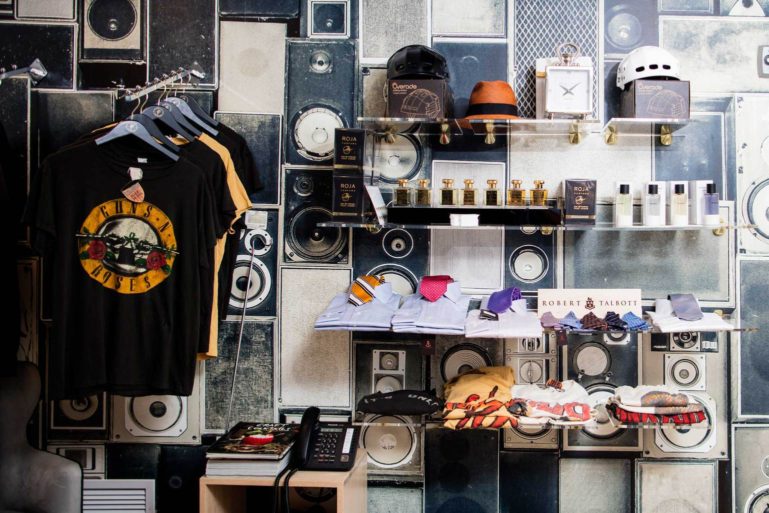
Top Retail Pricing Strategies (HINT: POS Software Helps)
Learning how to price items is one of the most important things you’ll do as a retail business owner. It’s also one of the hardest.
We can’t stress enough how important it is to have a solid retail pricing strategy. Luckily, there are a few tips and trick you can pick up to help make your job a bit easier.
With so many retail pricing strategies out there claiming to be the best, we thought we’d sift through them and pull out the best tidbits of advice we could find. What came of that is a list of tips, that if followed correctly, will help you accurately evaluate your stock and price successfully. So without further ado, let’s get pricing.
Know When to Make Money (and When to Take a Loss)
You don’t ever want to be that business that has items flying off the shelves but isn’t making a dime. It’s one thing to want to price your inventory competitively, but it’s another thing to be able to make enough profit to be able to keep the lights on in your business and be able to pay yourself. This is where consciousness retail pricing comes into play.
Though you want to build a robust and loyal customer base, while also being able to make sales, you need to keep in mind the bottom line of what you can sell your goods for, while still making a substantial profit. On the flip side, however, you need to know when it’s time to call it a day with a struggling product and take a loss. Sure, those “Keep Calm and Go Fishing” mugs seemed like a good idea when you placed the order, but the longer they sit on the shelf collecting dust, the more you’re starting to regret your decision. Whenever this is the case with a product, you need to realize that the longer those items stay put in your shop, the longer they are tying up the money you could use to purchase valuable goods. Pulling sales reports from your POS system can help you track inventory and pinpoint products that aren’t pulling their weight.

Do Recognize Standard Markups and Profit Margins Aren’t Realistic
When pricing retail merchandise, it’s tempting to take shortcuts and price all of your items with the same markup. Put simply, this is a very bad idea. If you sell a diverse array of items, not all items are going to have the same potential markup. For example, many restaurants require significant markups on menu item while convenience stores might only make a few cents on a gallon of milk. It all just depends on what you are selling. So if you have a variety of goods, you definitely shouldn’t price everything the same. Pricing is a nuanced game, so if you’re looking to create more general rules about markups, it’s worth breaking out your products into different departments and categories at the very least, and setting rules at that level. If this seems tedious and complicated, that’s because it is. But creating a solid retail pricing strategy is one of the most important things you can do for your store.
Do Consider the Competition
Never ignore the competition. In fact, we’ll go as far as to recommend that you make a few incognito visits to your competitors. Taking note of the price they are selling comparable items for will both give you a sense of what price you need to list items at to be competitive but also let you know if you’re headed in the right direction with your overall retail pricing strategy. Once you’ve gathered pricing information from a few competitors, you have two options. The first is slashing your prices to ensure you win the business you are competing for (though you might not be able to afford this), or you charge a premium in an attempt to convince customers that you are selling a superior product. Since both of these options aren’t ideal, we’ll recommend a third — pricing items similarly to your competition but blowing them out of the water with exceptional customer service. Even if you price items slightly higher than the competition, nothing can replace reasonable pricing coupled with phenomenal customer service. It’s a winning combination.
SEE ALSO: How to Write a Retail Business Plan in 7 Easy Steps
Do Collect, Analyze, and Leverage Data
Your point of sale software can provide you with a wealth of retail pricing information. So use it! Your system should be able to tell you how much you are selling of a given product over a specified period. It should also allow you to change your retail pricing relatively easily.
So in collecting and analyzing data, you find you have items that you can’t keep on your shelves, try raising the price by five percent for a few weeks to generate more profit. After a few weeks, pull the data from your POS system to see how the price change affected sales. If sales are unchanged, try raising the price a bit higher. Even if sales have fallen, but not by enough that you are losing profit, you’ve found the sweet spot for the retail pricing of those items. On the other hand, if sales plummet, you can always reverse the increases you’ve made. This process can be done on nearly all items you carry. Retail store software designed for small business can give you the ability to find exactly where that intersection is — and how it varies across the year — to earn as much profit as possible.

Take Your Square Footage into Account
You’ve probably heard this term thrown around before, sales per square foot. If the concept sounds foreign to you, let us break it down a bit. The basic idea is that you want each square foot in your retail store to be as profitable as possible. For example, let’s say you are given ten square feet and can put ten different items in that space, roughly one per each square foot. If you only have ten square feet, you’ll want to offer a combination of both mid and high-priced items that will allow you to garner healthy profit margins.
The same holds true for a store with 800 square feet. Just because you have more room, thus more space to display additional items, you still want the items you showcase to be as profitable as possible.
This is something to think about when setting prices for your retail store. Could three small items fit in the same space as one large item? If so, you want to make at least the same profit on the large item as you do on three small items. In an ideal world, you’d want to be able to sell as many small high-priced and high-margin items as possible. But of course, this isn’t an ideal world. So do your best with the variety of products you have at your disposal. Set the area that you want to devote to showcasing your inventory and take product sizes into account when pricing. If you can’t generate more money in profit from a larger item, ask yourself if it still makes sense to carry it.
Developing an effective retail pricing strategy is one of the fundamental building blocks of a successful retail business. Though a robust strategy is important, you also want one that can be tested and adjusted for improvements over time. No two businesses are the same, so taking a data-first approach and leveraging your POS system is the best approach.
Want to try ShopKeep for yourself?
Just answer a few easy questions.
Need help finding the right point of sale?
Just complete the form. We’ll call you right back to explain how ShopKeep can work for you.
Hit the ground running.Sprinting, in fact!
Read our free, comprehensive guide, Small Business 101, to learn all you need to know about starting a thriving business.

